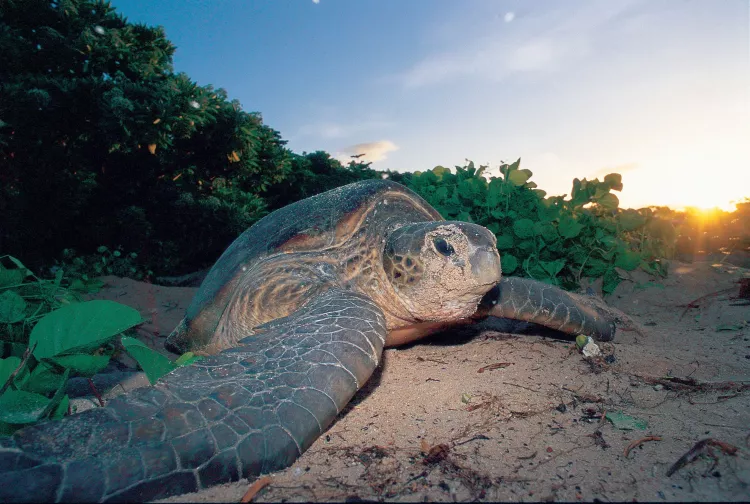Cleaning beaches increases sea turtle nests
Clearing the beach of flotsam and jetsam increased the number of nests by as much as 200 percent, a new study shows, while leaving the detritus decreased the number by nearly 50 percent.
A field experiment was conducted to understand the effects of large beach debris on sea turtle nesting behavior as well as the effectiveness of large debris removal for habitat restoration.
From May 1 to Sept. 1 of each year, from 2011 through 2014, a team of researchers studied nesting sea turtles along the Gulf Coast near Eglin Air Force Base in the Florida Panhandle. They sought to understand the effects of large debris on sea turtle nesting activities. The study area has one of the highest nesting densities of loggerhead sea turtles in the northern Gulf of Mexico.
The debris in the area were both natural, such as fallen trees and stumps, and man-made, including concrete, pipes and metal fencing that remained on the beach after old military structures were demolished. Large natural and anthropogenic debris were removed from one of three sections of a sea turtle nesting beach.
During the experiment, researchers recorded locations of nests and false crawls, defined as the number of times that sea turtles emerge from the Gulf waters but do not lay eggs.
Distributions of nests and false crawls in pre- (2011–2012) and post- (2013–2014) removal years in the three sections were then compared.
After researchers got rid of debris, sea turtle nest numbers increased 200 percent, and the number of false crawls increased 55 percent, the study showed. In beach sections where debris was not removed, the number of nests declined 46 percent
- Log in to post comments




























